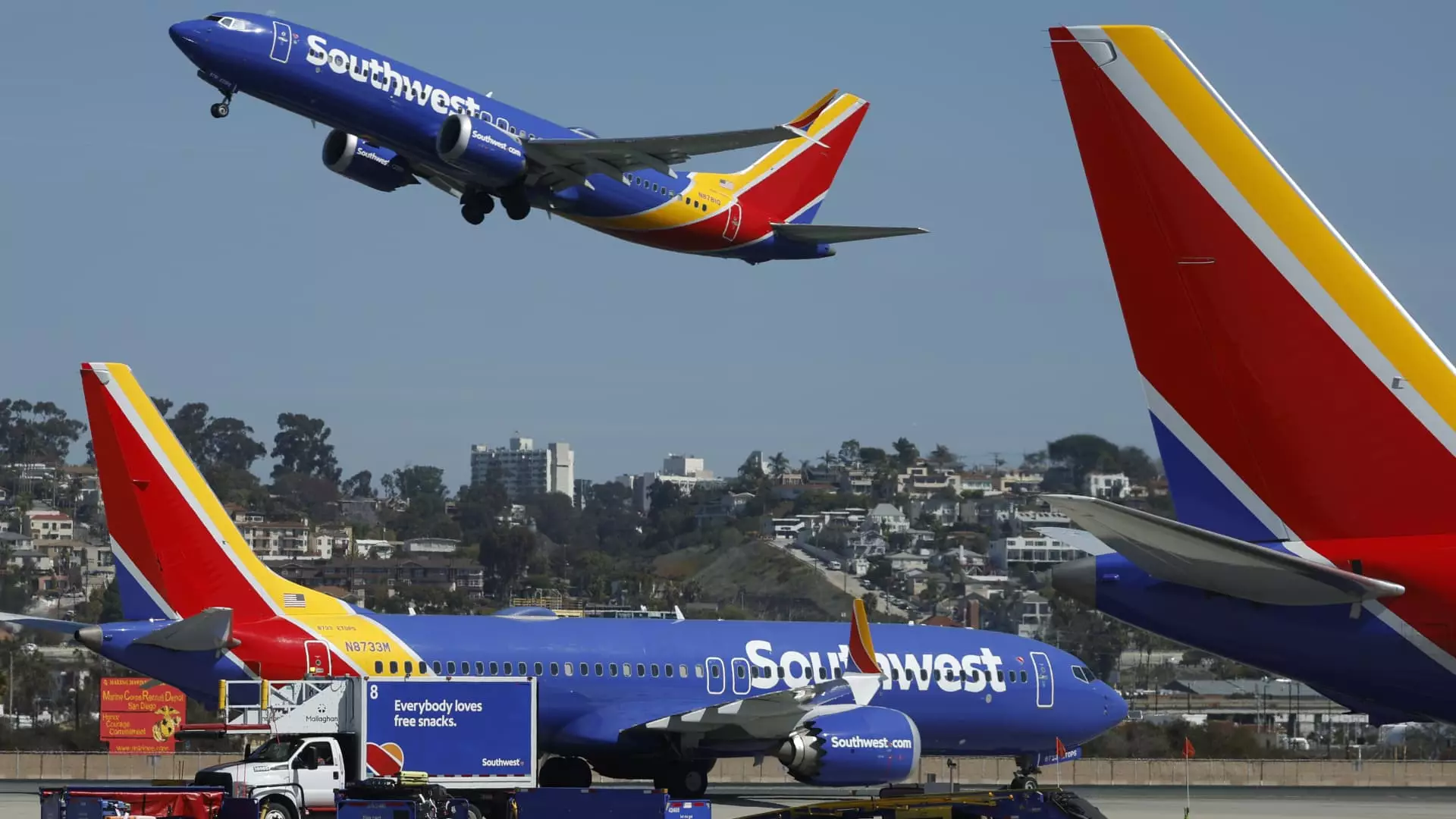In a bold move, Southwest Airlines has begun to chart a course for transformation under the leadership of CEO Bob Jordan. The airline is exploring options that challenge its long-held traditions, delving into airport lounges, premium seating, and even the prospect of long-haul international flights. This shift is not merely a response to customer demand but also a necessary evolution in a competitive landscape that has been increasingly brutal. Traditionally known for its budget-friendly model, Southwest is now at a crossroads where it must balance its beloved image of affordability with the undeniable lure of luxury and service enhancements.
For decades, Southwest Airlines carved a niche for itself by prioritizing no-frills service and cost-effective solutions for travelers. However, as rival carriers like Delta and American Airlines elevate their offerings by crafting luxurious experiences, the imperative for Southwest to rethink its customer strategy becomes crystal clear. In an age where consumers have a deluge of choices, the very essence of flying is changing. Jordan’s admission that the airline must remain open to evolving its services is a refreshing acknowledgment of the shifting customer expectations.
The Stakes of Competition
The airline industry is notorious for its volatility, and recent economic uncertainties have cast a pall over projected revenues and future growth. According to Jordan, Southwest has not only faced challenges due to fluctuating airfare prices but has also felt the pressing weight of competition. As competitors amplify their offerings, Southwest risks an erosion of its customer base. This scenario underscores a pivotal tension—how to stay true to its founding values while not becoming irrelevant.
What’s particularly striking is Jordan’s candid acknowledgment that customer defections have not translated to immediate losses post-implementation of no-frills tickets and bag fees. Yet, this situation is precarious. Just because customers haven’t left in droves doesn’t mean they won’t eventually seek alternatives, especially if rival airlines prove more accommodating. To keep loyalists from straying, Southwest must redefine its service portfolio, and hence the call for potential lounges and premium options is not merely aspirational; it’s critical.
Nashville: A Test Bed for Luxury
Jordan’s focus on Nashville International Airport as a stronghold highlights how specific markets may be more receptive to these upscale offerings. Nashville, with its flourishing economy and inflated demand for premium travel options, serves as a litmus test for Southwest’s ambitions. He remarks on the palpable desire among Nashville customers for lounges and first-class experiences—the implication being clear: if Southwest does not fulfill these desires, more lucrative competitors will eagerly scoop them up.
This not only puts pressure on Southwest to innovate but raises questions about its long-term identity. Are they still a low-cost carrier if they begin offering features reminiscent of traditional airlines? Or can they effectively merge premium options with their hallmark affordability? Such contradictions must be navigated with finesse to retain brand integrity while appealing to a wealthier clientele.
Long-Haul Dreams: A High-Stakes Gamble
The discussion surrounding longer-haul flights, specifically to Europe, introduces an array of complexities. Traditionally reliant on the Boeing 737 family, the idea of expanding their fleet to accommodate longer distances poses a significant operational challenge. However, Jordan’s openness to considering this shift signals a progressive mindset that might serve them well. If executed thoughtfully, this could redefine not only the airline’s scope but also its market positioning.
Nevertheless, this decision carries considerable weight; it will require reassessing operational efficiencies, pilot training programs, and logistical networks. The risk of misallocation of resources in chasing luxury while potentially alienating the traditional base cannot be overstated. For all the optimism surrounding expansion, strategic caution must guide these changes to avoid a misstep that could lead to financial turbulence.
Southwest Airlines stands at a pivotal moment. The push for innovation juxtaposed against its legacy creates an intricate dance of risk and opportunity. If handled adeptly, these changes could usher in a new era for the airline, but the stakes couldn’t be higher. The future is laden with possibilities, but it also calls for wisdom in execution—a sharp reminder that in today’s competitive environment, staying stagnant is not an option.


Leave a Reply